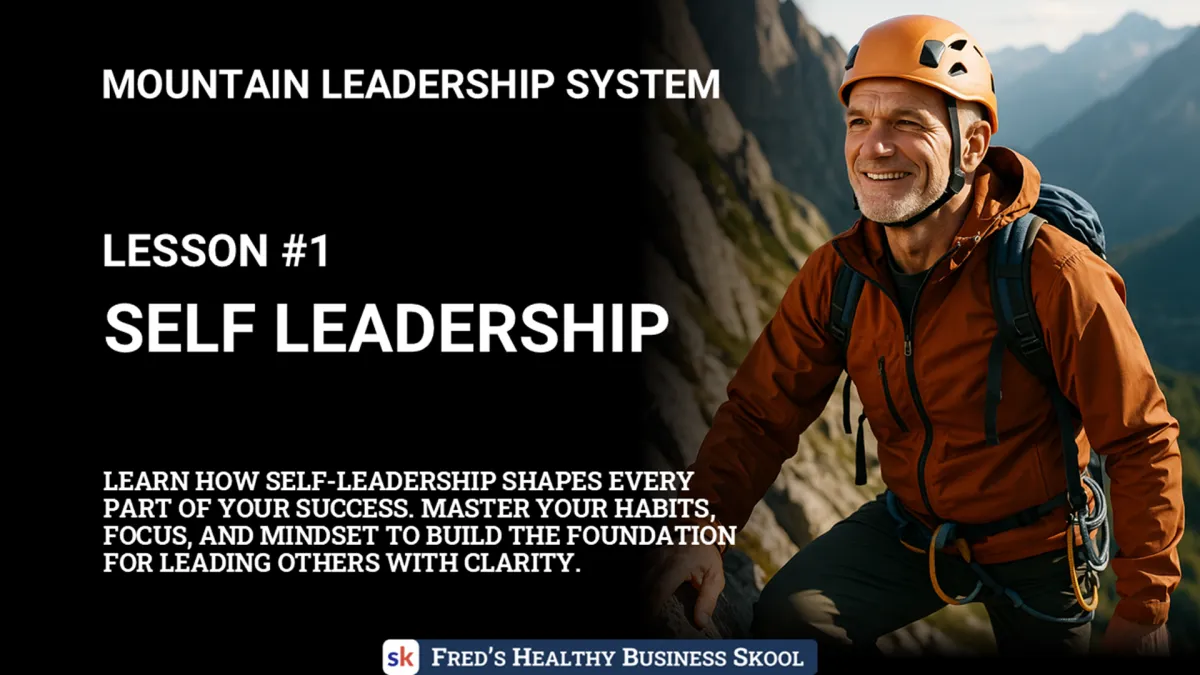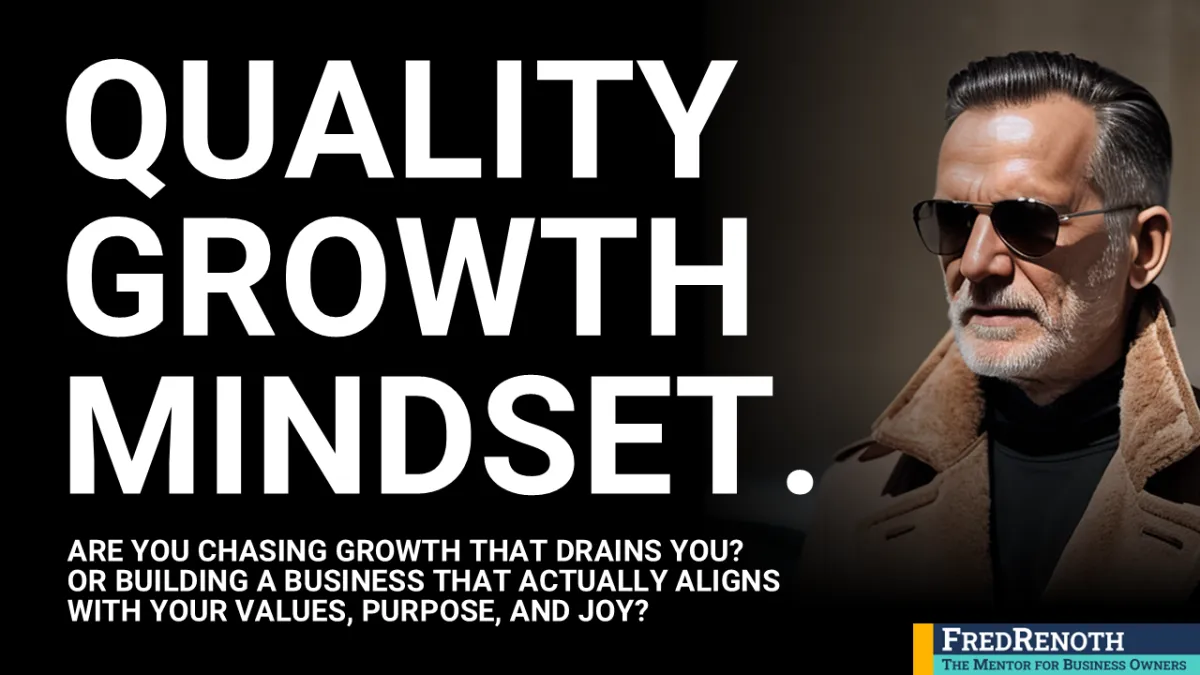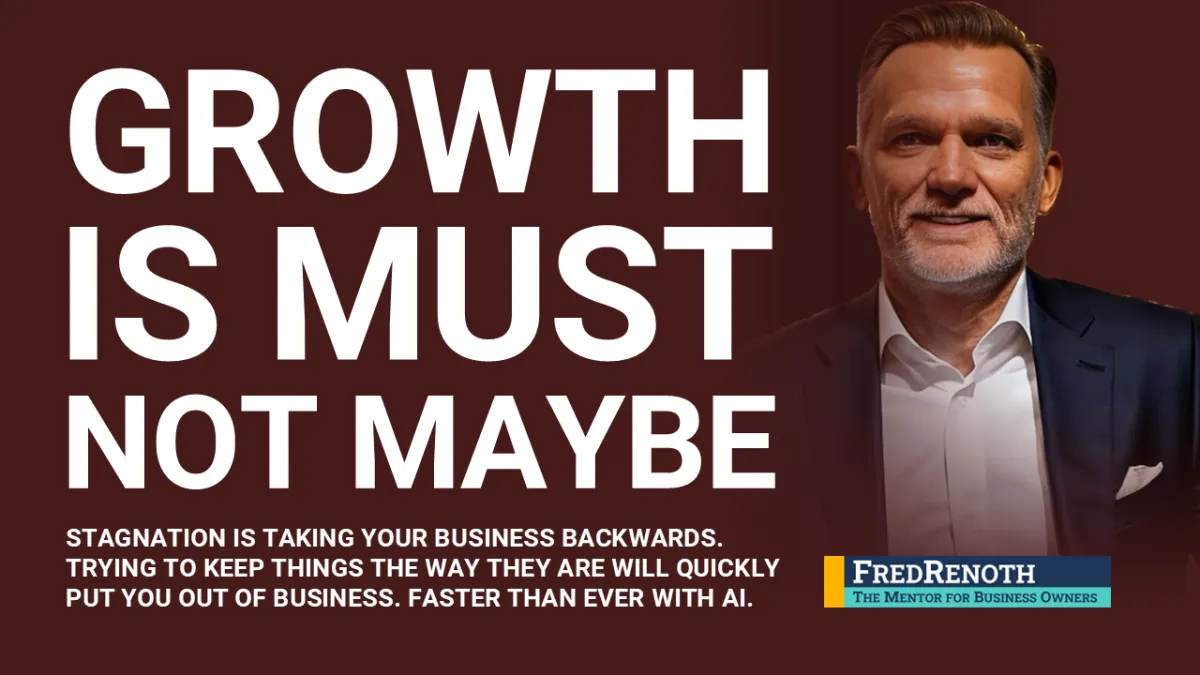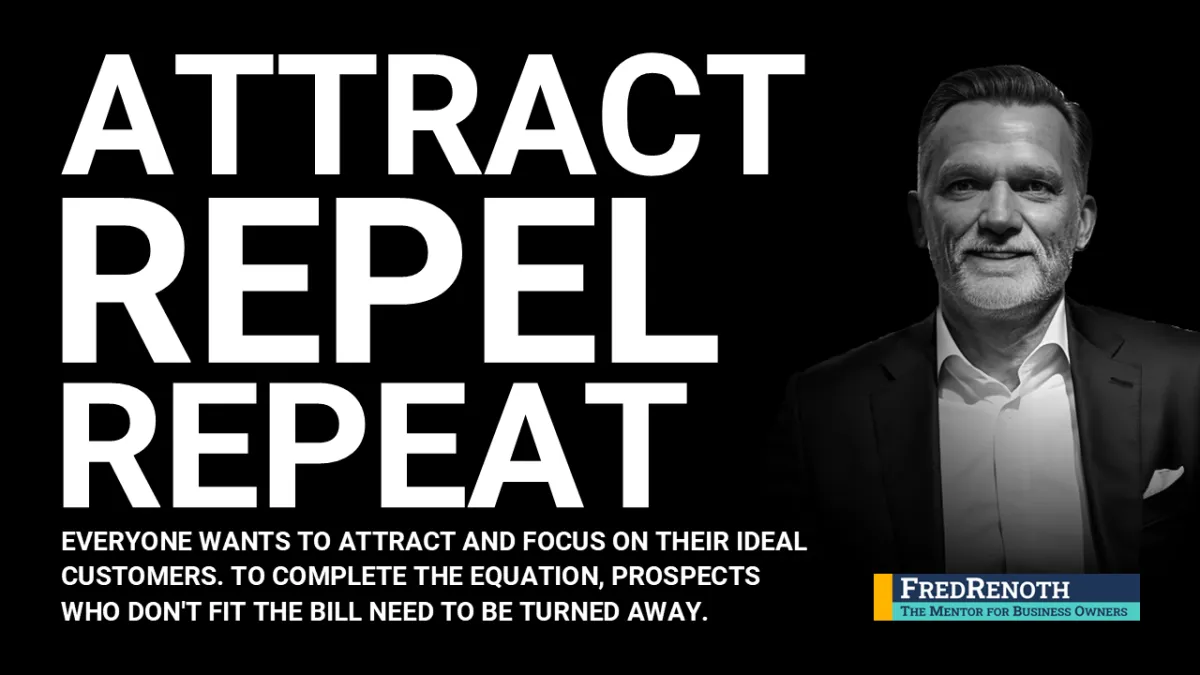


Welcome to Fred's
the Healthy Business BLOG

Lesson #1 - Self Leadership
Before you lead a team, run a meeting, or share your vision - there’s a quiet, powerful truth that shapes everything else: your ability to lead yourself. Not with motivational posters. Not with vague goals. But with deep alignment. Daily. Intentionally.
The Mountain Leadership System (MLS) doesn’t start with others. It starts at base camp: with you. This lesson, the first of ten, dives into the only foundation that can hold the weight of lasting leadership - self-leadership.
You’ll follow a structured 4-week path toward emotional discipline, ethical clarity, and purpose-driven habits. Because if you're misaligned at the core, everything you build will eventually collapse under pressure. Let’s begin.
WEEK 1 – Awareness Before Action
The Moment You Wake Up, You’re Already Leading.
Every morning is a leadership moment. Before emails. Before Zoom calls. Before people look to you. You're already setting the tone. The way you speak to yourself. The way you breathe. The thoughts you choose to entertain or ignore.
And yet, most leaders treat their internal world like background noise. Until it explodes.
That’s where self-leadership begins: noticing. Without judgment. With precision.
The Power of Self-Awareness
Daniel Goleman, renowned psychologist and author of Emotional Intelligence, argues that self-awareness is the cornerstone of effective leadership. In fact, leaders who rank high in self-awareness are 79% more effective according to studies cited in Harvard Business Review (Goleman, 2013).
But it’s not just corporate theory. It’s everyday practice.
Self-leadership requires you to ask three questions every day:
Am I aligned with my values?
Am I leading by example?
Am I acting with purpose, not impulse?
This week, your job isn’t to fix anything. It’s to see clearly.
WEEKLY PRACTICE: THE DAILY SELF-CHECK
Set aside 5 minutes every morning. Look yourself in the mirror or open a journal and ask:
What value matters most today?
What emotion is driving me right now?
What action will I take that honors both?
Do this for seven days. Without skipping. Without judging your answers.
The CEO Who Crashed From the Inside
Lena was the kind of leader everyone admired. Sharp, organized, inspiring. But two years into scaling her startup, she burned out.
Hard.
The investors didn’t see it coming. Her staff didn’t see it coming. She didn’t either.
Why?
She led on strategy. Not on self. She ignored the knots in her stomach. The tension in her voice. The exhaustion that dulled her intuition. Lena didn’t lose her edge because she lacked skills. She lost it because she lost her signal: self-awareness.
When she recovered - mentally and physically - her first change wasn’t in process or staffing. It was in her calendar. She blocked out time each morning to check in. She called it “Align & Lead.” That ritual saved her career.
WEEK 1 REVIEW
Did I complete a daily self-check every day?
Which values showed up most often this week?
Did I act against my own values at any point?
What emotion did I ignore that later escalated?
What patterns am I starting to notice in myself?
WEEK 2 – Aligning Values and Behavior
Values Aren’t Posters - They’re Your Operating System.
It’s easy to list your values: honesty, integrity, accountability. Most leaders do. But here’s the catch - values don’t matter until they cost you something.
Until you have to speak up when it’s uncomfortable. Stay quiet when your ego wants to roar. Own a mistake before anyone else catches it.
This week’s focus is simple: align what you do with what you say you stand for.
Because the real leadership gap isn’t between people. It’s between your own values and actions.
The Science of Alignment
Neuroscience shows that alignment between your core values and your behavior activates the brain’s reward system—boosting motivation, confidence, and clarity (Kang et al., 2020). Misalignment, on the other hand, activates stress circuits. It creates inner friction that slowly burns leaders out from within.
If Week 1 was about seeing yourself clearly, Week 2 is about standing for something daily.
The Coach Who Fired a Star
Jordan was a basketball coach at a small college with a rising team. One player - his top scorer - kept violating curfew. The school had rules. Jordan had values. But the pressure to win was heavy.
He benched the player for a week. They lost two games. Critics blasted him. Donors threatened to pull funding. But something shifted in the locker room. Trust deepened. The team rallied.
That year, they didn’t just win the championship. They rewrote the culture. Leadership means you choose alignment over applause.
WEEKLY PRACTICE: VALUES IN ACTION
Each day this week:
Choose one core value.
Find one opportunity to act on it, even if it’s inconvenient.
Reflect: Did I lead with it or just talk about it?
Examples: If you choose “honesty,” admit a mistake before it’s discovered. If you choose “service,” help someone without being asked. Make it small. Make it real.
WEEK 2 REVIEW
Weekly Reflection Questionnaire:
What values did I act on this week?
What was the most challenging moment of alignment?
Where did I choose comfort over congruence?
What did I learn about my actual vs. stated values?
What value will I focus on next week?
WEEK 3 – Emotional Fitness = Leadership Stamina
Why You Snap at People You Love (and Work With).
Most leadership failures don’t come from incompetence. They come from reactivity. A careless email. A defensive comment. A tone you didn’t intend.
In Week 3, we tackle your internal climate: how you manage emotional spikes and recover quickly when you don’t.
This isn’t about “being calm.” It’s about being conscious. Emotionally aware. Responsive, not reactive. Because your team doesn’t just follow your strategy—they absorb your energy.
Emotional Regulation and the Brain
The amygdala, your brain’s emotion center, reacts 100 times faster than the rational cortex. That’s why you can feel rage or panic before you understand what’s happening. But here’s the good news: regular mindfulness practices can shrink the amygdala and increase your capacity to respond with awareness.
Translation: emotional training rewires your leadership.
The Consultant Who Couldn’t Breathe
Derek ran a 7-figure consultancy. Brilliant strategist. Horrible temper. He’d snap under pressure, then apologize - but the damage was done.
His turnover rate skyrocketed. Clients started to ghost him. A mentor gave him one rule: “Breathe before you speak.”
Derek resisted. But he tried. 5 seconds in. 5 seconds out. Again and again.
It didn’t change everything overnight. But over six months, he regained trust. His team stopped flinching. He stopped regretting. The real leadership hack wasn’t a better CRM. It was emotional control.
WEEKLY PRACTICE: REACT > REFLECT > RESPOND
This week, when you feel triggered:
Pause and notice the emotion.
Breathe—5 in, 5 out—for 60 seconds.
Ask: What outcome do I actually want?
Practice this in small moments: before calls, before feedback, before you reply. This is training. Not therapy. Not perfection. Progress.
WEEK 3 REVIEW
Weekly Reflection Questionnaire:
What emotional patterns showed up most often?
How many times did I pause before reacting?
What situations escalated—and how could I have handled them differently?
What did I learn about my emotional strengths and blind spots?
What emotion do I want to work on next?
WEEK 4 – Purpose Over Productivity
Why "Getting Things Done" Isn’t Enough.
You can run your calendar like a pro and still feel empty. You can hit deadlines, close deals, and rack up KPIs - and still wake up tired.
This week is about anchoring your daily action in something bigger: purpose. Not a vague mission statement. A visceral clarity.
Leaders who act with purpose create trust. They stay focused during chaos. They inspire—not because they’re louder, but because they’re clearer.
The Science of Purpose
Studies show that purpose-driven individuals are more resilient under stress, more satisfied with their work, and less prone to burnout (Hill et al., 2016). Purpose is your inner compass. Without it, you're just reacting to whatever’s loudest.
The Freelancer Who Lost the Plot
Elena built a solid coaching business. She had clients, income, freedom. But she felt scattered. Overwhelmed.
One night, she asked herself, “Why did I start this in the first place?” She wrote one word: freedom. Not just hers. Her clients’.
She began to build systems that freed them from busywork. She changed her messaging. Raised her rates. And for the first time, her work felt like leadership—not just hustle.
WEEKLY PRACTICE: THE “WHY BEFORE WORK” RITUAL
Every morning, before you open your inbox:
Write down your core purpose in one line.
Review your to-do list. Ask: Which task serves my purpose?
Star it. Do that one first.
This ritual rewires productivity into purpose. It’s not about doing more. It’s about doing what matters.
WEEK 4 REVIEW
Weekly Reflection Questionnaire:
What actions felt aligned with my deeper purpose?
Where did I confuse busyness with impact?
What task or decision gave me the most energy?
What’s one thing I will stop doing next week?
What does purpose-driven leadership now mean to me?
5-POINT ACTION PLAN
Put Self-Leadership Into Daily Practice
Start every day with a 3-minute self-check. Ask: “What value will I embody today?” and “Am I reacting or responding?”
Choose one small act of value alignment daily. This builds integrity in motion, not theory.
Use the 60-second breath pause. Before meetings, emails, or feedback—regain clarity before acting.
Journal your leadership energy weekly. What energized you? What drained you? What patterns emerge?
5. Block time for your purpose. Even 15 minutes daily. Anchor your actions in your “why,” not just your to-do list.
FINAL THOUGHT
If leadership is a mountain, this is your basecamp. Skip it, and you’ll slip. Build it, and you’ll rise.
Self-leadership isn’t a motivational concept. It’s a measurable, practical, daily discipline that fuels everything else. The stronger your alignment, the greater your altitude.
Welcome to the climb.
Want to Take it a Step Further?
Enjoyed this article?
It may give you a taste of what we talk about with our clients in the FredRenoth Mentoring Program.
Check out our website (CLICK HERE FOR WEBSITE).
And, of course, I'm ready to answer all your questions in a VALUE CALL. Just click the link.
Copyright 2025 Sysbizz LLC - All Rights Reserved
















